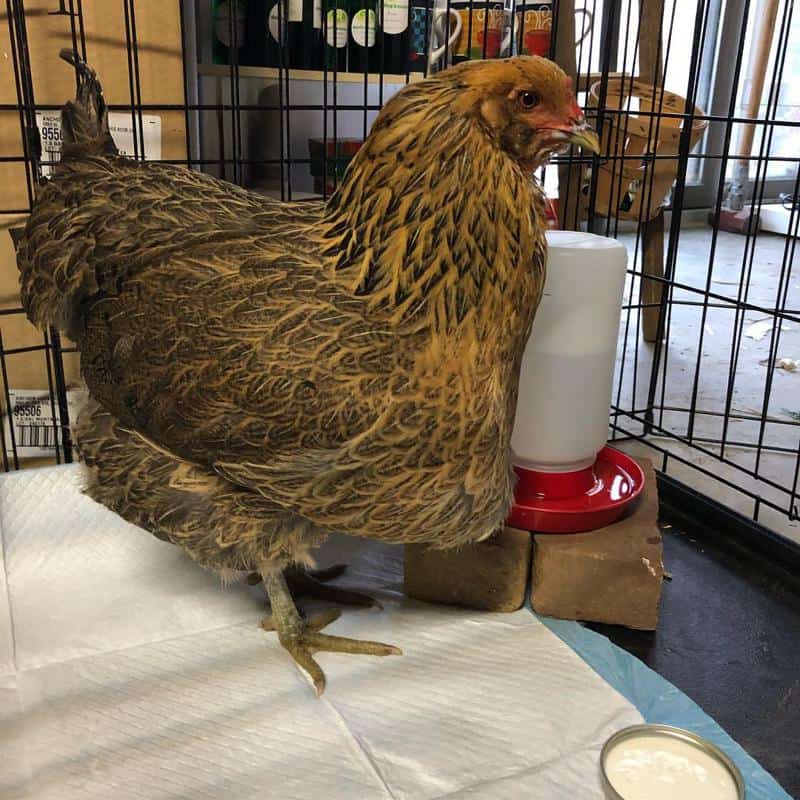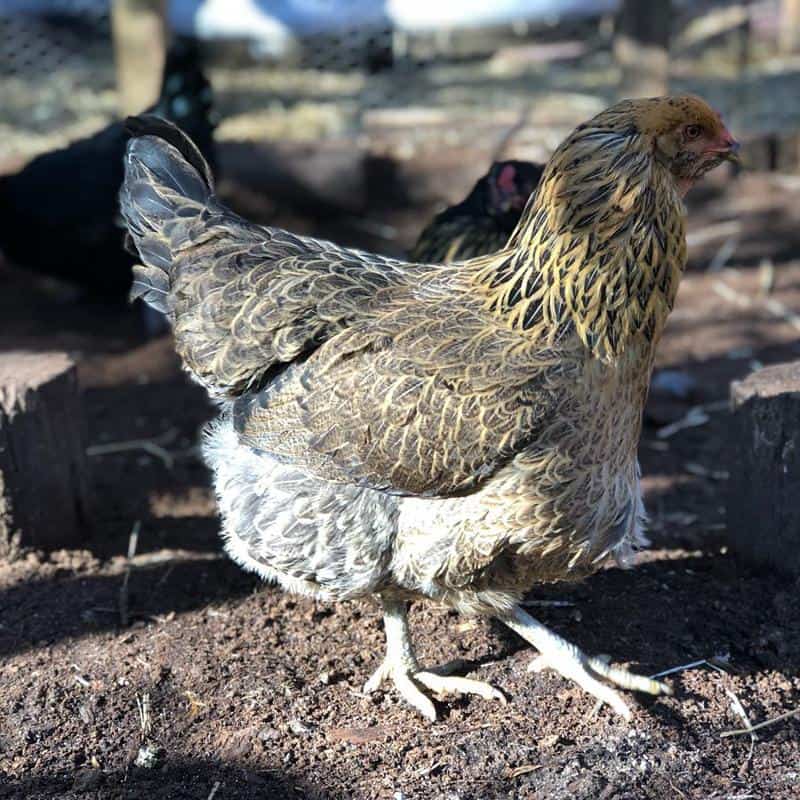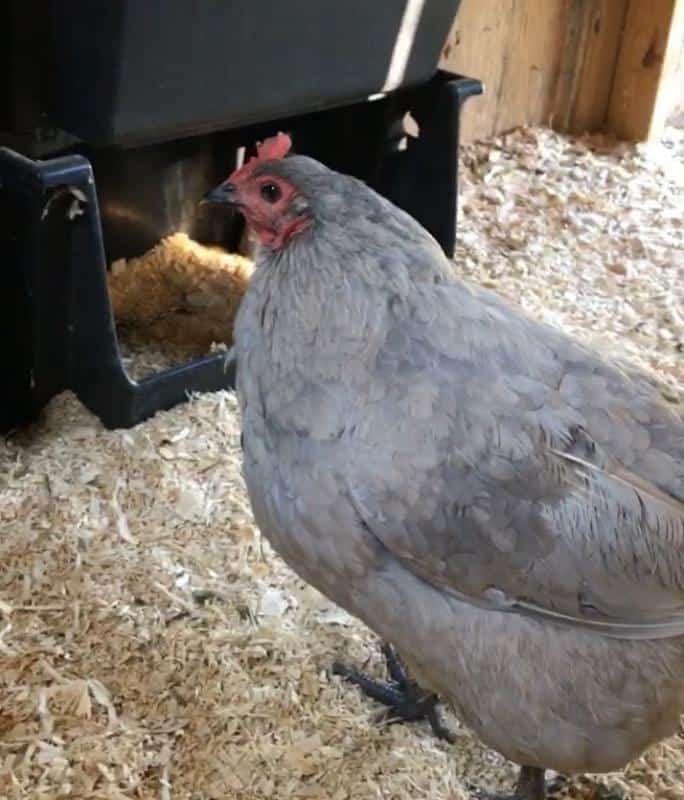Whether you’re a chicken enthusiast or raise chickens for commercial reasons, it’s crucial to understand how to keep them healthy and safe. What better way to do that than learning about common health conditions that might afflict them?
In today’s segment, we will dive into one of the most prevalent chicken health conditions: Sour Crop.
If you observe chickens and other poultry, you will notice they eat food rather fast, almost in a panic. Being prey to larger predators, the concept of “eat and run” takes shape for these birds, as it could mean the difference between life and death.

Fortunately, they have an ace up their sleeve–the crop. It’s a soft, stretchy pouch just below the esophagus that temporarily stores undigested food for up to 12 hours. Throughout the day, stored food gets released from the organ, broken down, and digested to provide nutrients for the body.
However, if the crop gets infected with yeast, the chicken might develop crop mycosis, popularly known as sour crop. If left untreated, this condition can lead to digestion problems and even death.
To learn more about the sour crop, its causes, prevention, and treatment, continue reading…
What Is Sour Crop?
Simply put, sour crop, known also as thrush or candidiasis, is a fungal infection caused by Candida albicans.
Funny enough, a healthy chicken’s digestive system hosts a multitude of Candida spp, including Candida albicans. But if the natural microflora of the system is disturbed it might be thrown off balance.
For example, if food remains in the crop overnight, it might ferment, causing an increase in the PH levels. This change in acid levels causes yeast like Candida albicans to multiply rapidly, resulting in a nasty infection.
The Candida spp causes the crop’s walls to thicken, preventing food from draining into the gizzard and getting digested.
In most cases, your chicken might appear to have a full belly, but it slowly starving. Finally, the bird will lose weight, become emaciated, and might die.
Causes of Sour Crop
As mentioned above, a sour crop occurs when there’s a disturbance in the crop’s microflora.
But what causes the disturbances or changes?
Here are a few common triggers:
1. Moldy Food
As a chicken farmer, you should watch what you feed your chicken. Expired or contaminated food could lead to infection and death within the flock.
In this case, moldy food can cause sour crops. How?
Mold is a fungus. As such, it can alter the PH levels in the crop, triggering the growth of Candida spp and other micro-organisms.
Furthermore, mold can also cause fermentation of stored food, leading to other digestion problems.
2. Long Grass
As you know, chickens love to eat grass. This rings true, especially during spring or when they have not consumed enough greens for some time.
However, if they eat long, stringy grass or tough plant material, this could be a problem. First, these foods slow down digestion. Second, they might ball up in the crop and cause a blockage, leading to a sour crop.
The scary part is that your chickens don’t have to eat a lot, one or two strands can cause a blockage. This is a major cause of concern, particularly among bantam breeds.
3. Injury and Foreign Objects
Chickens have a habit of gobbling up everything. And nails, pieces of metals, and rubber bands are no exception.
Half the time, such objects pass through the digestive tract without a hitch. But occasionally, they might injure the insides of the chicken, including the crop.
This can be quite problematic because an injury to the crop can result in an inflammation that might slow the digestion process. It might also disrupt the crop’s micro-environment, causing conditions like sour crop.
4. Coop Litter
Chances are, you agree with us when we say chickens are full of surprises. Even after consuming enough feed, they can still eat their litter and bedding.
If you suspect your chicken eats their coop litter, we recommend you check them for sour crop. Usually, hard-to-digest coop litter like wood shaving and straw can lead to crop blockage.
5. Worms
Worms in a chicken’s digestive tract can also prevent the crop from draining properly.
Thread or capillary worms are the most prevalent worms in the crop, especially in floor-reared flocks.
As the name suggests, these worms resemble thread or hair. Chickens usually get infected with them when they consume earthworms (as they are their intermediate host).
Capillary worms affect the absorption of nutrients in the digestive tract, which leads to malnutrition. They also reduce your bird’s appetite and weight.
In the crop, the worms prevent the functioning of the organ. They might also infiltrate other organs of the bird, causing sudden death.
6. Antibiotics
Antibiotics can be both a blessing and a curse. While they’re good at helping your chickens combat certain ailments, they could also disrupt the natural balance of microbiota in the crop.
Most antibiotics are broad-spectrum. This implies that while tackling the bad bacteria, they also kill the good bacteria. The deficiency of good bacteria can lead to a massive buildup of bad bacteria.
Some antibiotic medications also alter the pH of the crop and might make it favorable for the growth of bacteria and fungus.
7. Infections and Diseases
If your chicken is suffering from an infection, it is highly susceptible to developing sour crop. This health condition often emerges as a secondary infection when your chickens are sick.
This is because treating the infection might require the use of antibiotics. As mentioned above, antibiotics kill both good and bad bacteria, leaving the chicken vulnerable to developing sour crop.
Certain ailments could also spread bacteria or viruses all over your chicken’s digestive system leading to obstruction of the digestive process.
8. Too Much Starch
Contrary to popular belief, bread is not a healthy snack for chicken. It’s fine in minimal amounts, but too much bread and other processed starch not be good for your birds.
These foods might cause blockage of the crop. At the same time, sugars and yeasts in the foods can ferment, which can lead to the buildup of acid levels.
As said earlier, acidity alters the growth of bacteria and other microbiomes in the crop. Eventually, your chicken might develop a chronic case of sour crop.
9. A Slow-Emptying Crop
Some chickens can’t process food as quickly as others. However, this doesn’t necessarily mean your chicken will get a sour crop. Instead, it tells you that the chicken is at a higher risk of developing the condition.
A simple solution to this problem is adjusting your bird’s diet to a lighter and easily digestible feed.
What Are the Symptoms of Sour Crop?

Being prey animals, chickens excel at hiding diseases. These birds understand exposure could make them easy food for predators. Also, a sick bird might fall victim to pecking, bullying, and isolation.
But worry not! Sour crop is fairly easy to identify. The simplest way to tell whether your chickens have this condition is to check them in the morning before their first meal of the day.
A chicken’s crop normally empties overnight, so it should be flat when you touch it in the morning. If it feels squishy and full, you’ve probably guessed right.
But for confirmation, gently apply pressure on the crop. If you hear gurgling sounds, the crop is not emptying properly. The sounds result from gases produced during the fermentation process.
An infected bird can also produce a putrid smell out of its beak.
In addition, here are other clinical signs and symptoms of sour crop:
- Lethargy
- Decreased egg production
- Weight loss
- Diarrhea
- Loss of appetite
- Drowsiness
- Regurgitation
Are There Treatments for Sour Crop?
Yes, sour crops can be treated. But sadly, there is no specific treatment–it’s all a matter of trial and error. Nevertheless, we have discussed a few ways can deal with this condition in your flocks below.
But before that, let’s see how you can handle a suspected case of sour crop in your flock:
- Isolate the chicken in a warm and quiet area.
- Withhold food from your chicken for the first 24 hours – It may seem cruel, but adding more food to an already infected crop is a recipe for disaster.
- Massage the crop gently – The gentle pressure might break down some contents of the crop and help them move along the tract. Do this several times a day.
- Give a serving of grit to aid in breaking down the food.
- Schedule time intervals to check for any change in the size and fullness of the crop.
If it feels empty after 12 hours (of no feed), give the chicken plain yogurt or clean water with probiotics.
Once the condition improves, keep the bird isolated for a few more days. Also, provide plenty of garlic water and easy-to-digest foods such as boiled eggs, diced veggies, or mashed fruit.
If you see no sign of improvement after 24 to 48 hours, it’s time for a veterinary consultation.
Alternatively, you can try these home remedies:
- Epsom Salts: Magnesium sulfate, commonly known as Epsom salts, can help detoxify your chicken’s crop. Just mix a tablespoon of the salt with water and administer it to your bird twice or thrice a day using a syringe
- Copper Sulfate: Another detoxifying agent is copper sulfate. Add a half teaspoon of copper sulfate into a gallon of water and let the affected chicken drink this solution for five days. Administer the solution with caution, as in high doses it can be lethal.
- Molasses: This is usually an alternative to Epsom salts, especially when you’re dealing with a flock. Mix a pint of molasses with around 5 gallons of water and give it to the flock members. But they should not drink this for more than 8 hours. On the same note, remember that molasses can cause diarrhea. So be prepared for a lot of runny poop in the coop and backyard.
- Apple cider vinegar: It’s an antifungal. Adding it to your chickens’ water might help reduce the instances of sour crop.
- Oil of Oregano: This is a natural antibiotic and works well in conjunction with cinnamon when added to the chickens’ diet.
- Probiotic yogurt: Give your birds this yogurt on an emergency basis. Remember, chickens are fairly lactose intolerant and probiotic yogurt will help them rebalance their gut microorganisms.
How to Prevent Sour Crop in Chicken?

It’s hard to watch your chickens suffer, especially if you know you could have prevented it. But it’s never too late! Check out these few preventive measures for sour crops:
Watch their diet and feeding habits
As with all living things, a good diet indicates a healthier life. So, if you wish to avoid cases of sour crop you should implement the following:
- Ensure your chickens eat fresh food–It should also be rich with probiotics to help keep the balance between the good and bad bacteria. If you can’t find any, you could opt for probiotic pills, with the help of your vet.
- Avoid foods with a lot of yeast or sugar- Most processed foods can prove difficult to digest.
- Provide plenty of fresh, clean water- You can use garlic water or add apple cider vinegar to the water to balance the pH levels in the crop.
- Add herbs to their feed–Herbs like ginger, cayenne, chamomile, clover, and comfrey promote gut health and improve the chicken’s well-being.
- Provide them with lots of grit – This helps them break down their food faster.
- Maintain a regular feeding routine and feed quantity – Don’t overfeed your chicken or you risk increasing their susceptibility to crop problems.
- Deworm your chickens regularly–For this, you might need an extra hand to help you capture and administer the deformers. It also doesn’t hurt to call your local vet.
- Feed them anti-worm foods–These include pumpkin seeds, catnip, or nasturtiums.
Sanitation
Proper sanitation should be a priority when you’re keeping chickens. A clean, well-ventilated coop eliminates any risks of disease and infections.
Below are a few simple steps you can take to ensure maximum hygiene in your coop.
- Clean waterers and feeders regularly – Change the bedding and keep the area aerated. This prevents any parasitic or worm infestations.
- If your chickens are free-range, ensure their space is free of harmful objects that your chickens might swallow while foraging.
- Keep your grass short – Also, if you’re going to free range, avoid areas with Wheat Grass or Mitchel grass. Fibrous grasses are difficult to digest for the chickens.
Avoid Prolonged Use of Antibiotics
Antibiotics might mess with the balance of micro-organisms in the digestive system and leave your chicken vulnerable to sour crops.
Furthermore, always follow a round of antibiotics with plenty of probiotics. Probiotics will help restore the balance of bacteria in the crop.
Also Read:
Difference Between Sour Crop and Impacted Crop
Before we go, we’ve noticed most people confuse a sour crop with an impacted crop. So, let’s clarify the two conditions.
A sour crop is a fungal infection that causes the walls of a chicken’s crop to thicken and dilate. It normally occurs when there’s an overgrowth of Candida albicans in the crop.
Crop impaction, on the other hand, occurs when there’s a blockage in the crop preventing stored food from moving forward in the digestive tract. It’s more common in free-range chickens since they have access to long fibrous grass and other similar materials.
The same can happen if the bird consumes foreign objects like plastic that can obstruct the emptying of the crop.
Final Thoughts
Like with any other chicken disease, you need to deal with a sour crop immediately after you identify it. It might not seem like a life-threatening condition, but if it goes untreated, your poultry production effort will suffer.
As the name suggests, the condition makes the crop inflamed and sour. Even worse, it affects the normal functioning of the organ, leading to digestive problems and even death.
Thankfully, the sour crop is treatable through several home remedies and a time medical intervention.
And the best part? You can adopt preventive measures to prevent this disease like giving your birds high quality and fresh feeds.
With that out of the way, we’ve come to the end of our piece. Leave us a message below, if you have any questions!
